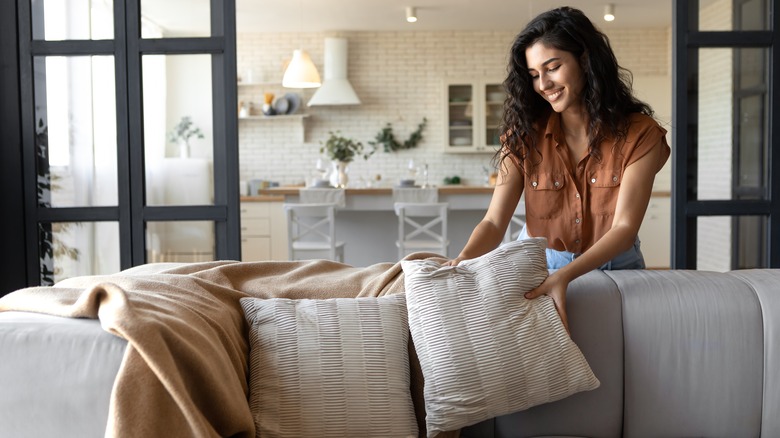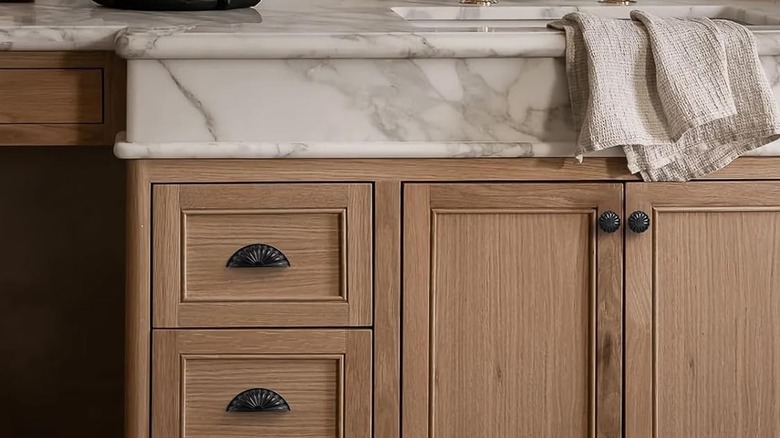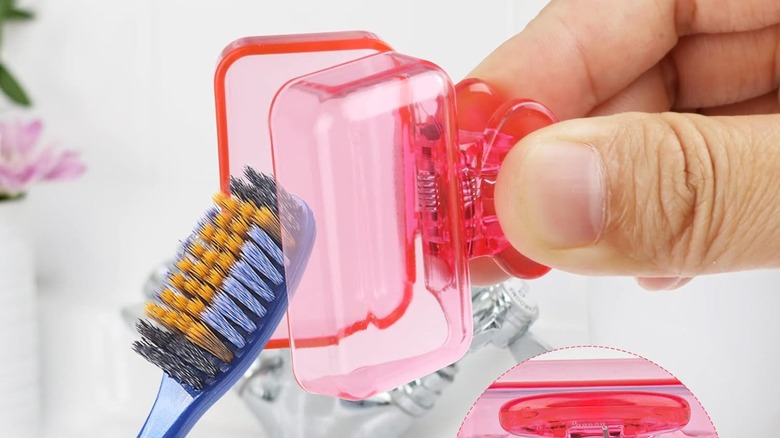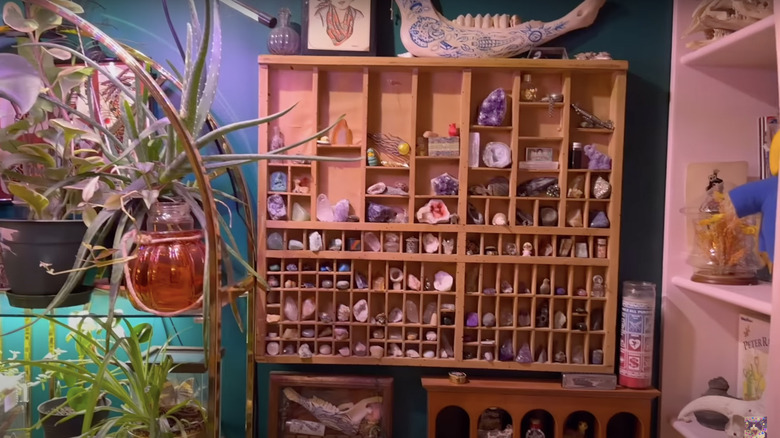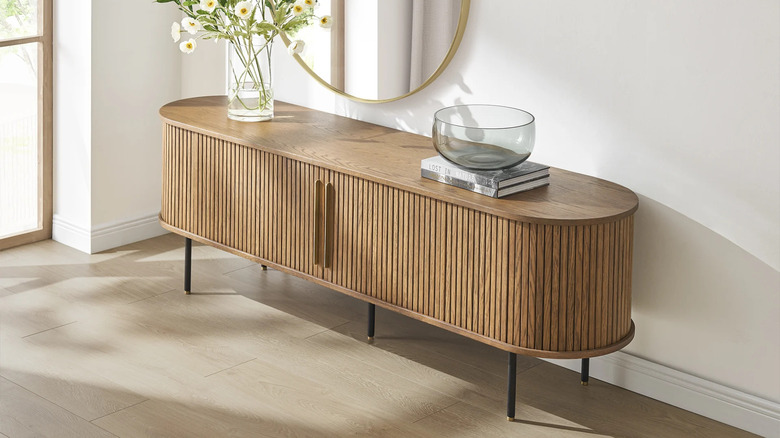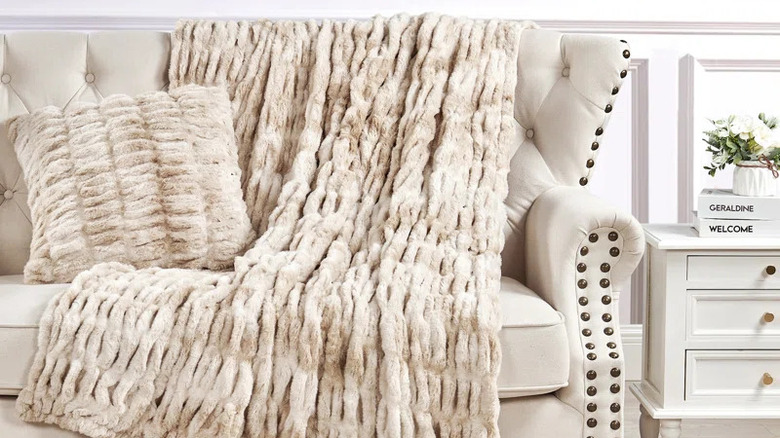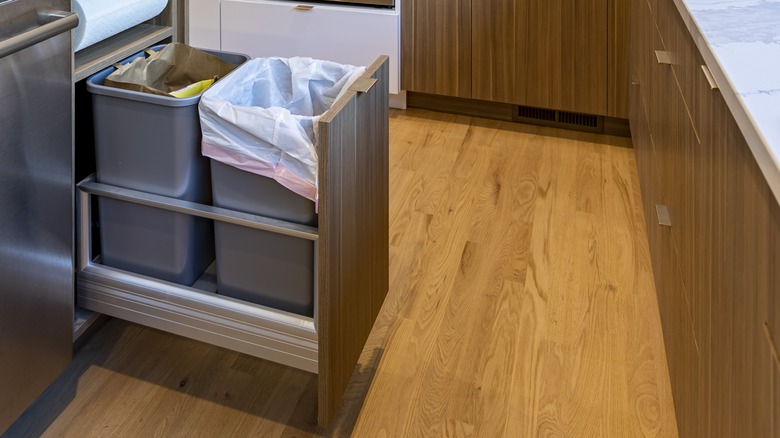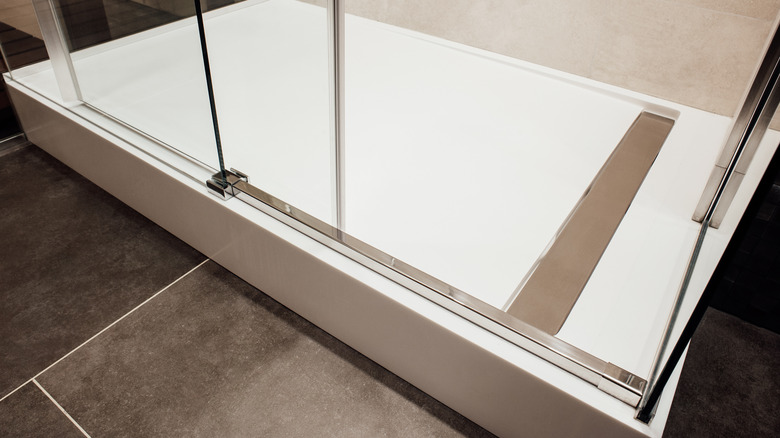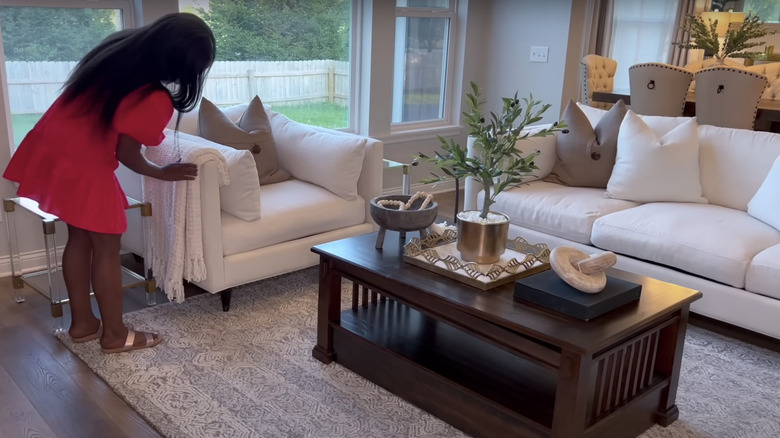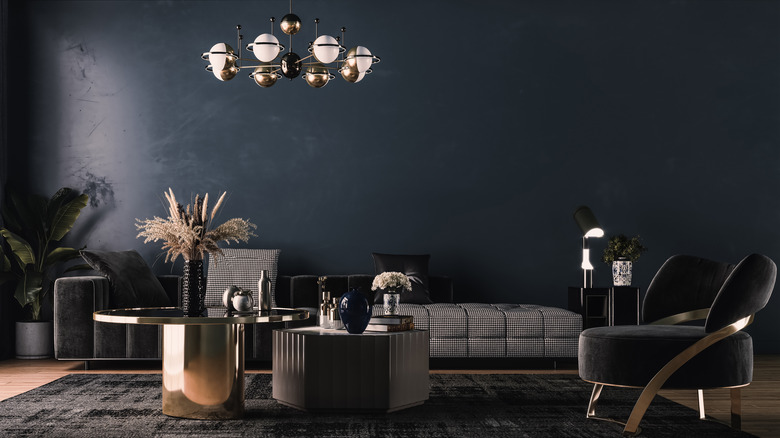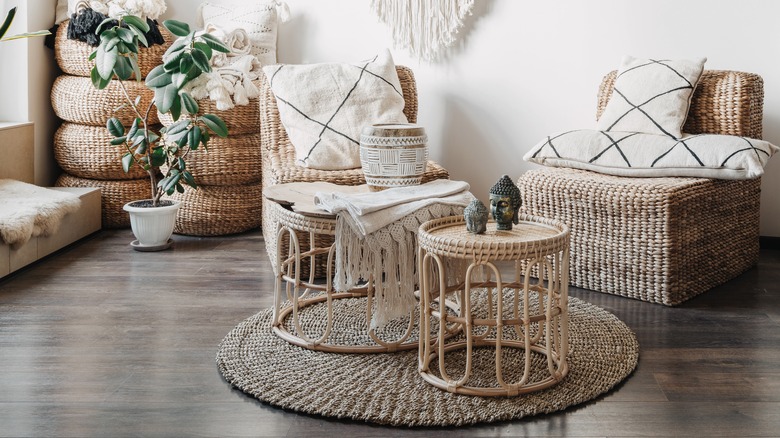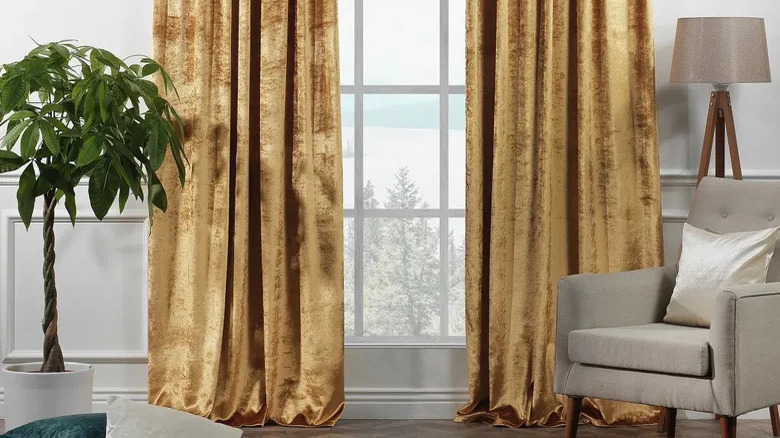Popular Household Items That Are Secretly Dirt-Magnets
Interior design trends come and go like all other fads in society. People act impulsively, flocking to new ideas without considering their long-term practicality. Many popular household items, designs, and fixtures are a nightmare to clean because they trap dust, dirt, and debris that contribute to a messy and unhygienic household.
These interior design elements are only fun in the beginning. Once they've settled in and become part of your household, performing the frequent but necessary cleanings becomes a hassle. Thorough dusting, washing, and disinfecting is time-consuming, especially in households with children and pets. In fact, if you have poor attention to detail, you may not even realize how dirty these items have become because they aren't always visible from the outside.
Learn more below about popular household finds that aren't as ideal as they seem. They could be in your kitchen, bathroom, living room, bedroom, or any other indoor or outdoor living space. The bigger the house and the more rooms within, the more likely you already own one of these dirt magnets. If this is the case, don't throw in the towel just yet. Fortunately, there are ways to make routine cleaning easier and alternatives you can use as replacements.
Cup pull cabinet and drawer handles trap hidden grease and debris
Picking out new handles for cabinetry is exciting. There are hundreds of designs that transform standard cabinets into modern, classic, rustic, and eclectic styles. Cup pull handles are half-circle designs that fix directly against cabinets or drawers. The inside is carved out, creating a small space to dip your fingers in and pull open. They come in many shapes, but they all share the same problem – their inverted center is a dirt gold mine.
Every time you pull these handles, your fingers leave a little oil or dirt behind, which slowly builds up over time. Since the underside is hidden, you can't see how dirty they've become, and it's easy to forget to clean them. More ornamental styles even have small ridges and divots on the underside, making it even trickier to get into the narrow crevices.
Instead of a cup pull knob, a standard sphere or rectangular shape is the most practical. No three-dimensional designs mean fewer gaps for moisture, bacteria, dirt, germs, and other untold horrors to get stuck in. An ornamental knob may fit your aesthetic, but you should also consider their practicality. If you are set on a cup pull style, at least ensure the underside is smooth and ridge-free so cleaning won't be as much of a hassle.
Toothbrush covers and holders trap moisture and bacteria
Out of all household essentials and belongings, a toothbrush is one of the top priorities people wish to keep clean and hygienic. Ironically, the National Sanitation Foundation (NSF) carried out a 2011 study that revealed toothbrush holders were the third most germiest items in people's homes. Many people store their toothbrushes in a holder and with a cap, thinking they're doing the most to keep their toothbrushes safe from germs. The truth is that although everyone rinses their toothbrush after using it, how often do they remember to clean the cap and holder?
If you use these accessories to keep your toothbrush bacteria-free, you must remember to cleanse them, too. The NSF recommends washing your holder with hot, soapy water and wiping it with a non-toxic disinfectant at least once or twice a week. When storing your toothbrush, make sure it's standing upright and not against anyone else's brush so the bristles can air dry freely. The American Dental Association (ADA) doesn't recommend using a cover at all, since the enclosed environment is a cesspool for germs. Caps are better suited for temporary use, specifically traveling since you're putting your toothbrush in a bag full of other toiletries.
Clutter, knick-knacks, and tabletop decor create more space for dust to settle
With maximalism on the rise, homes are ditching their minimalist setups for artistically cluttered tabletops and shelves. Maximalism is a fun way to show personality in interior design, but it isn't the most practical style where dust is concerned. The more items scattered around your room, the more nooks and crannies where dust can settle. It's also harder to notice debris buildup and insects that have moved in among the mess, making you less aware of how dirty your home has become.
By no means is this a reason to abandon maximalism if it's a style you like. You can still decorate with clutter, but keep a schedule so dust doesn't get out of hand. Ensure your HVAC system is up to snuff, with clean and functioning filters, air ducts, and machinery. The better your HVAC runs, the better it is at filtering small particles out of the air, leaving less to settle on furniture and interior decor. Keep to a schedule and assign yourself or another house member to dust one room per week. Dusting each room every few days keeps layers from piling up and grime from getting out of control.
Fluted furniture and decor draw in more dust and cobwebs
Fluted furniture is another design concept associated with maximalism and has the same downfall. This style features long grooves in the bodies and legs of furniture and decor, giving them more depth and complexity from an aesthetic standpoint. The lines bring depth to a room and add a classical European touch but at the cost of more cleaning. The cleft design creates more space for dust to settle and get trapped. Instead of drifting to the ground to get swept up in your next vacuum run, the dust lodges in these dips, where you'll have to use a narrow brush or soft folded towel to wipe it free.
If you love the elegance of fluted designs, look for furniture and decor with vertical lines. Dust is less likely to get trapped in these than horizontal options because of the direction they run. You can also prevent dust buildup by coating wooden furniture in sleek solutions that repel these tiny particles. Depending on your preference, apply a protective beeswax once a year or an anti-static polish every six months.
Faux fur pillows, blankets, and rugs trap dirt and oils, and are too flimsy for high-speed vacuuming or machine washing
Faux fur textiles are a luxurious addition to homes, and they impart comfort and elegance in one fell swoop. They are high pile and usually made from polyester blends to emulate real animal fur. Although they are cozy to cuddle on and pretty to look at, their beauty is short-lasting compared to other fabrics.
Faux fur and shag-style materials get dirty easily and are difficult to clean. Dirt and debris easily get trapped in the long fibers, and when the time comes to wash them, you can't just throw them in your washing machine. Machine washing tangles the fibers, and the high heat shrivels them into an unrecognizable shape. It's not recommended to vacuum shag carpets either since the suction winds up the fibers, getting them caught on the brush roller and tugging them out.
Most people handwash faux fur, using cool water to soak it completely. Instead of ringing it dry, gently press the water out before leaving it out to air dry. This tedious process makes faux fur far less appealing to busy households. If you're looking for a similar glamorous look, you should opt for soft textiles that aren't in a shag style. Plenty of soft blankets, pillows, and rugs are made from machine-washable, low-pile materials. Just choose colors and patterns similar to the faux fur you had in mind so you can still style your room the way you want to without the tedious cleaning responsibilities.
Built-in drawer trash bins have tracks and moving parts that trap garbage debris
According to Trulia, the kitchen is one of the biggest deciding factors in whether or not people decide to purchase a home. Many modern homes feature nifty installations, like built-in drawer trash bins, which are perceived as both classy and convenient. Although it seems like a luxury to be able to hide away your trash can when not in use, this fixture isn't all sunshine and rainbows.
These trash bins are typically installed on rollers that move along tracks, allowing you to slide the drawer open and closed. When you throw away garbage, small wrappers and crumbs are bound to miss the can, falling into those tracks. Oil and grease can also drip between the cracks, unknowingly starting to coat the tracks as well. Over time, the debris builds up, and most homeowners don't even think to check how dirty it's become.
Once you do notice the buildup, you'll have quite a cleaning job ahead of you. It's not as simple as hosing down a traditional trash can. You'll have to remove the tracks, which may take a screwdriver and some basic engineering to wipe them down in addition to the can itself. An easier alternative to this functional but toilsome design is to simply keep a short trash can behind a pull cabinet instead of a rolling drawer. You can also purchase a trash can that fits inside a decorative exterior, disguising it as a pretty storage bin rather than where you throw away refuse.
Sliding glass shower tracks inevitably fill with mold and mildew
Sliding glass shower tracks suffer the same cons as sliding trash cans. Their design is streamlined for easy opening and closing, but the sliding tracks aren't practical for long-term daily use. Every time you shower, water pools next to the sliding door, and small puddles inevitably drip into the gaps in its design. Since this water sits, it stays moist and creates an inviting environment for bacteria. A Two Maids representative, Alyssa Landrum, claims, "I would never have a sliding glass shower door. The tracks are incredibly hard to clean and tend to build up with mold and mildew." (via Real Simple).
A more practical shower design would be a walk-in frameless shower, which has no door with hinges or rolling tracks. These designs require less upkeep since they have no doors, and they reduce shower installation costs by $590 to $2,275 on average (via Modernize). If you already have sliding glass doors, there is still hope for maintaining a clean bathroom; it just takes physical effort. Run your bathroom exhaust fans and use a squeegee and microfiber towel to dry off your doors immediately after every use. You should also scrub with bleach or a shower cleaning solution weekly to keep mildew at bay. It's best to remove growths when they're small, for once they begin, they quickly grow out of control.
White upholstery is easily stained by dirt, sweat, and oils
White couches, ottomans, and armchairs create an impression of spaciousness, transforming rooms into modern and glamorous atmospheres. While white upholstery is easy to match with other colors in your decor, walls, floors, and other furniture pieces, it has a reputation for not being the most practical shade. White is a high-risk hue that shows every stain and scratch, distracting from its pristine appearance.
It shows marks far more easily than other colors, and households with children and small pets will have difficulty keeping them clean. Pets and small children don't have the sense to be gentle with the material or to be careful not to spill drinks or food on white surfaces. You'll need to vacuum fabric couches and wipe down leather couches on a weekly basis. Immediate spot cleaning is also necessary to prevent spills or dirt from getting ingrained in the light surface.
To reduce the risk associated with white upholstery, you should look for options made with microfiber and synthetic fabrics. These materials aren't considered "luxury" textiles, but they are the easiest to clean. You don't have to worry about accidentally making a stain worse by using the wrong cleaning formulas; you only need soap and water. As an extra precaution, keep white upholstery in low-traffic rooms or areas off-limits to children and pets. You can protect the material proactively by using a protective slipcover or treating it with a stain guard, like Scotchgard Fabric & Upholstery Protector on Amazon.
Black and deep brown glossy furniture shows every speck of dust
Black and deep brown furniture is on the other end of the spectrum but shares its downsides with white upholstery. Dark and glossy furniture has a regal and intense vibe but at the cost of showing every scratch and speck of dust. Due to the material and shiny finish, their appearance is easily smudged with fingerprints, making cleaning a constant task. In addition to needing constant cleaning, you must be gentle and use a soft microfiber cloth or sponge. Otherwise, you'll leave small scratches on the surface that create eyesores on your furniture and more divots for dust and grime to get trapped.
Keep these interior design accents clean by doing all you can to protect the finish. Put furniture foot pads under sharp and heavy decorative objects on shelves and displays. Use placemats on dining tables and coasters on end and coffee tables. Be careful not to drag items over the surface, and politely warn house guests and other household members to be mindful of the fancy setup.
Wicker chairs trap moisture, crumbs, and other fallen debris
Wicker or rattan furniture is a style of woven material typically used outdoors or in bohemian-style rooms. The horizontal and vertical weaves are made of bamboo, reed, vinyl, or willow, but all types have the same shortfall. The way the strands of authentic or faux grasses tie together leaves many gaps and holes throughout the furniture. These holes collect moisture, dust, crumbs, and other debris and liquid spills, forever losing them in the depths of its design.
This type of furniture is popular on front patios and in poolside locations, but this doesn't mean these are ideal spaces for it. Even if you wipe down wicker chairs and tables after rainfall or going for a swim, some moisture still gets trapped between the strands. Over time, the leftover moisture festers with mold and mildew, making the furniture smelly and unclean.
To prevent this from happening, keep outdoor wicker furniture in the sunlight, allowing the sun's natural heat and rays to evaporate moisture and prevent moldy buildup. Remove and prevent mildew from the outer parts by rubbing it down with Murphy Oil Soap when you notice the first signs of mold beginning to form. Avoid using indoor and outdoor wicker furniture sets for snacking and having meals to reduce how many food crumbs fall inside.
Floor-length drape folds are tedious to move and trap dirt and dust
Curtains are decorative accents that have been used for thousands of years, and they come in various lengths and sizes. Standard sizes are 84, 96, or 108 inches long, and the largest size reaches the floor, leaving a graceful puddle of material at the base of windows. This style owes its origins to European influences and adds a look of elegance. However, like many other previously discussed "elegant" styles, floor-length curtains are known to trap excessive dirt and dust.
Since they swoop to the floor, dust and debris get swept up and caught in the fabric. Angela Boswell, founder of the drape, explains how "to keep the curtains clean, you must lift them off the floor," making them more tedious than shorter designs (via Living Cozy). Both the curtains and floor around them take more work to clean up since you have to adjust and move the heavy fabric, making them impractical for efficient housekeeping.
To make these lengthy curtains more practical, look for lighter fabrics, like sheers, thin cotton, and lightweight linen materials. It'll be easier to push them aside and lift them. You should also purchase a soft brush attachment for your vacuum to make removing hair and dust more efficient.
